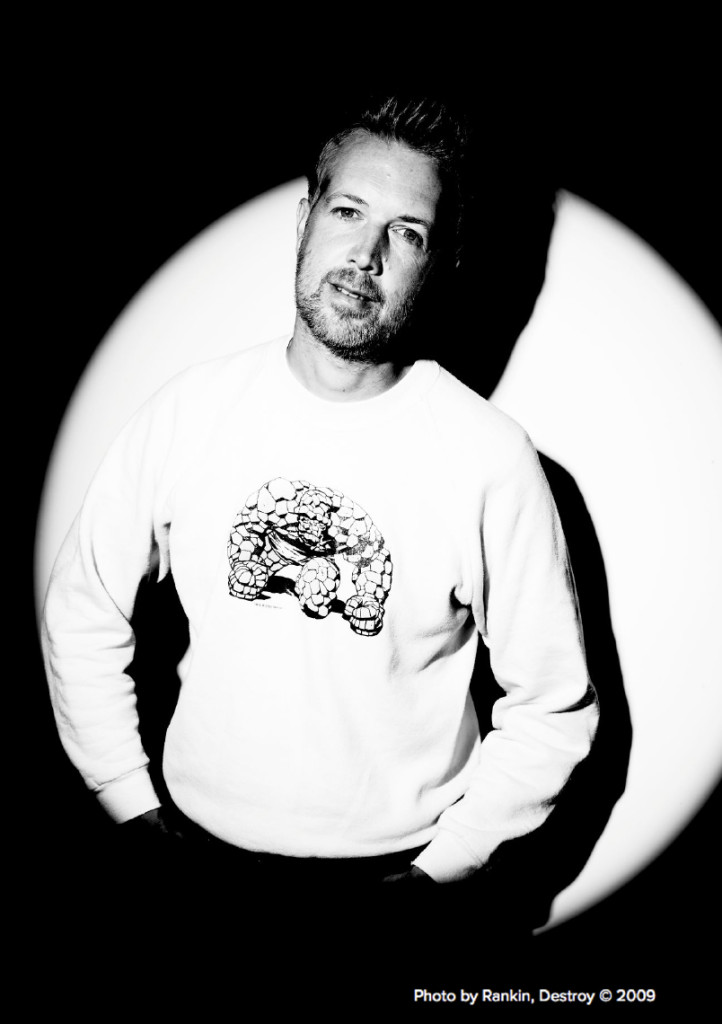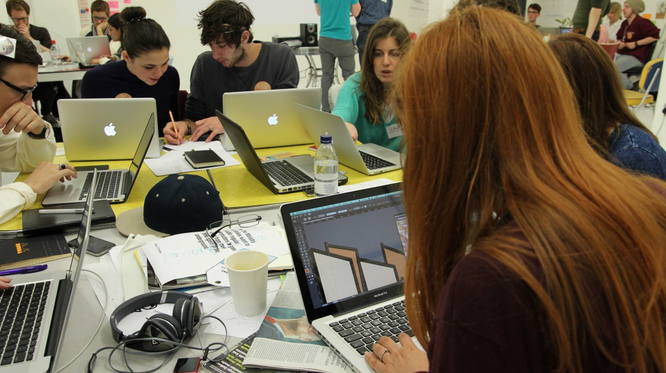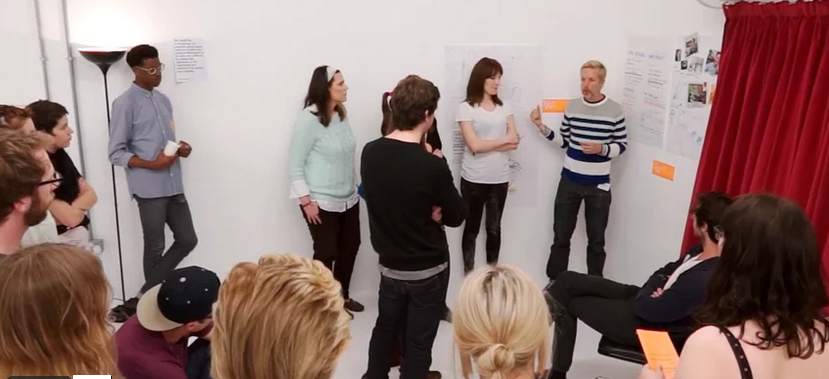This article was originally published in Computer Arts.
Fred Deakin is Professor of Digital Arts at University of the Arts, London and runs Collabology, an experimental educational initiative that readies students for working in the creative industry by encouraging greater collaboration. He outlines three key shifts happening in the design industry and shows how new talent and established players can prepare for the future.
 It’s a confusing time to be a young creative. We are in the middle of the biggest cultural and technological revolution in centuries, and anyone who tells you they know what the digital world will look like in six months, let alone six years, is a liar.
It’s a confusing time to be a young creative. We are in the middle of the biggest cultural and technological revolution in centuries, and anyone who tells you they know what the digital world will look like in six months, let alone six years, is a liar.
There is always wisdom to be gained from studying the past, but trying to replicate a previous generation’s career paths in the current climate of relentless innovation is clearly misguided. How can our emerging talent respond appropriately to this situation and how should education be helping them?
I believe there are three key shifts that need to be considered. The first is that we now all have access to professional tools and resources that will empower us to engage with pretty much any creative task. Affordable technology and software brings us tools, while Google provides basic understanding.
1. The shift from specialists to the multi-skilled
Specialists will always have their place, but a multi-skilled career will be the norm for the majority. Despite the stated specialisms of their respective courses, most students I teach are embracing this possibility and are refusing to classify themselves as designers, musicians, filmmakers, sculptors or performers, preferring instead to allow their creative instincts to lead them into whichever medium they feel is appropriate.
This can be problematic when an instant solution ignores fundamental design principles, but more often than not genuinely new synergies emerge. Working in this way also encourages the ‘T-shaped’ principle originally coined by IDEO.
Alongside a deeply developed core discipline (the vertical line of the T) practitioners also have a basic understanding of a diverse selection of skills (the T’s crossbar). This enables them to collaborate more easily with experts in those other fields.
2. The need for greater collaboration
Collaborative skills are crucial when we consider the second shift. Today’s projects are vastly more complex than before. The need for a truly integrated digital element, as well as the constant innovation demanded by a rapidly changing landscape, means that a far wider range of skills is necessary.
The power to deliver excellence is now beyond the capacity of any one individual or a single discipline team, and the need to collaborate with others who excel in different areas is paramount for success.
But collaboration is not as easy as it sounds. Humility, trust and generosity are required to accept feedback on your half-finished work, explain its intentions in ways that others can comprehend, understand why feedback is important, honor others’ concerns and value their expertise as much as your own. Egos need to be left at the door – the age of the rock star designer is fading fast.
3. Closer ties between education and industry
Collaboration is a muscle that needs exercise. In my new role as Professor of Interactive Digital Arts at University of the Arts London I’ve been organizing a series of pop-up design studios in which 20 students from a range of courses are brought together for two weeks within a workspace donated by a pioneering partner from the creative industries.
The invitation to the students is to come together to imagine and then deliver ambitious cross-media projects that have a positive impact on the world: so far the results have been brilliant. There is some initial resistance from the students, but after letting their egos relax a little they embrace these new possibilities with enthusiasm.
Cross-disciplinary and collaborative skills are important because of the third shift. It is a very exciting time to be a young creative. There has never been more opportunity: it’s still possible to have a great idea tomorrow and see it change the world within a couple of years by accessing an online audience directly.
How to prepare for the future
You’ll need some like-minded colleagues, lots of hard work, a damn good idea and a bunch of luck, but no generation has had more ability to create its own future.
In the last few years I’ve seen the internet become increasingly monetized by a new breed of corporates and snake-oil merchants who have weakened the original spirit of discovery and community that made us all fall in love with it.
This is inevitable with any emerging medium, but the internet is continuing to transform on a daily basis and it’s our responsibility to make sure that the next phase of the digital revolution is a genuinely creative and communal one.
I believe that embracing these practices will empower us for this challenge – watching them spread through education and industry, I’m optimistic about the future.
To learn more about Fred and his design, video and music work, visit freddeak.in.
If you like this, try:
My BW Design Conference highlights
Nine reasons why your designs should start with a sketch
Trashing the desktop metaphor







T-shaped designers – a mythical creature of IDEO lore…
YOU THINK IT’S HARD TO BE YOUNG AND CREATIVE. TRY BEING 85 YEARS OLD AND NOT AT ALL CREATIVE AND totally addicted to being on a lovely old desktop and not knowing what the hell they are all talking about!!! OKAY?
I am a generation-Xer and a designer, and we are being asked to pivot from being the “vertical line of the T” to the crossbar after years of specializing and its hard. I was already a multi-creative with traditional graphic design, photography, video (and film), web and interactive; now I am being asked to learn a series of programming languages so that I could better communicate with developers and engineers. This stuff is hard.
But I don’t believe the Millennials have that problem as all they know is being the mythical creature. I’m not saying one is better than the next, but each one provides a sort of stability as a designer as the tech world and the design world touch. It all depends on the end product really and the skills you have to contribute to it